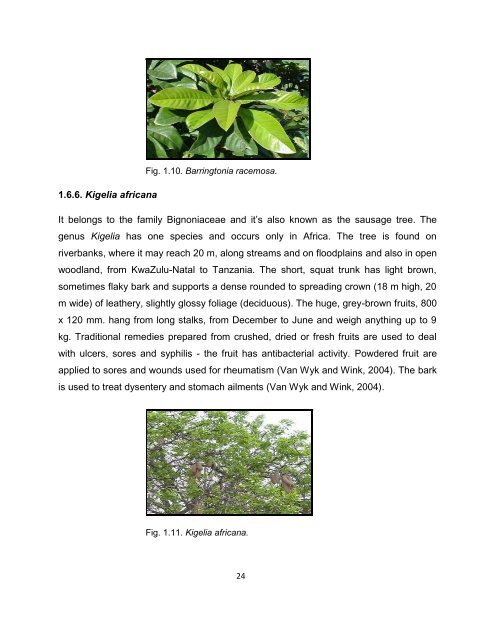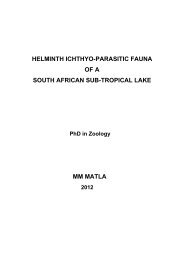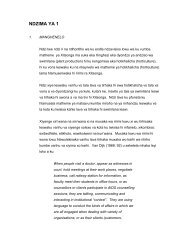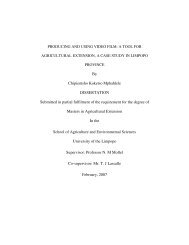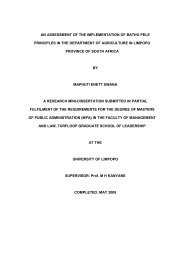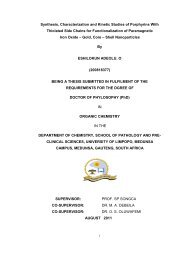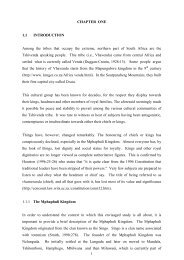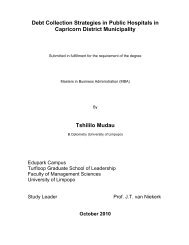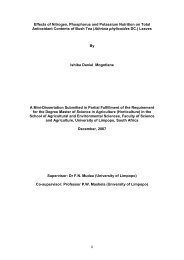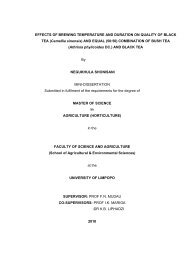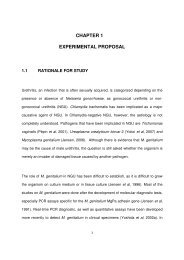Mmushi T MSc (Microbiology).pdf
Mmushi T MSc (Microbiology).pdf
Mmushi T MSc (Microbiology).pdf
You also want an ePaper? Increase the reach of your titles
YUMPU automatically turns print PDFs into web optimized ePapers that Google loves.
Fig. 1.10. Barringtonia racemosa.<br />
1.6.6. Kigelia africana<br />
It belongs to the family Bignoniaceae and it’s also known as the sausage tree. The<br />
genus Kigelia has one species and occurs only in Africa. The tree is found on<br />
riverbanks, where it may reach 20 m, along streams and on floodplains and also in open<br />
woodland, from KwaZulu-Natal to Tanzania. The short, squat trunk has light brown,<br />
sometimes flaky bark and supports a dense rounded to spreading crown (18 m high, 20<br />
m wide) of leathery, slightly glossy foliage (deciduous). The huge, grey-brown fruits, 800<br />
x 120 mm. hang from long stalks, from December to June and weigh anything up to 9<br />
kg. Traditional remedies prepared from crushed, dried or fresh fruits are used to deal<br />
with ulcers, sores and syphilis - the fruit has antibacterial activity. Powdered fruit are<br />
applied to sores and wounds used for rheumatism (Van Wyk and Wink, 2004). The bark<br />
is used to treat dysentery and stomach ailments (Van Wyk and Wink, 2004).<br />
Fig. 1.11. Kigelia africana.<br />
24


